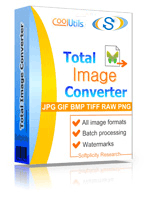1) Upload ND2 file to convert
Drop files here, or Click to select
2) Set converting ND2 to TIFF options
3) Get converted file

 Total Image Converter
Total Image Converter
 JPEG, TIFF, PSD, PNG, etc.
JPEG, TIFF, PSD, PNG, etc. Rotate Images
Rotate Images Resize Images
Resize Images RAW photos
RAW photos Watermarks
Watermarks Clear interface
Clear interface Command line
Command line💾 Upload Your File: Go to the site, click on «Upload File,» and select your ND2 file.
✍️ Set Conversion Options: Choose TIFF as the output format and adjust any additional options if needed.
Convert and Download: Click 👉«Download Converted File»👈 to get your TIFF file.




| File extension | .ND2 |
| Category | Image File |
| Description | ND2 is a file format used for storing images and metadata generated by Nikon microscope cameras. The format was developed by Nikon Instruments and is used in a variety of biological imaging applications, such as fluorescence microscopy and live cell imaging. ND2 files can store a range of image data, including grayscale and color images, time-lapse sequences, and z-stack images. The format also supports metadata such as exposure time, pixel size, and microscope settings, making it a useful format for scientific research and analysis. One of the key advantages of the ND2 format is its compatibility with Nikon microscope cameras and software, which allows for seamless image acquisition, analysis, and sharing. The format can also be opened and analyzed using other software, such as ImageJ and FIJI, making it a versatile format for biological imaging research. Overall, the ND2 format is a specialized file format that provides a useful way to store and analyze image data from Nikon microscope cameras. While it is not a widely used format outside of scientific research, it is a powerful tool for those working in the field of biological imaging. |
| Associated programs | Total Image Converter |
| Developed by | |
| MIME type | |
| Useful links | |
| Conversion type | ND2 to TIFF |
| File extension | .TIFF, .TIF |
| Category | Image File |
| Description | The TIFF (Tagged Image File Format) is a widely-used file format for storing digital images, developed by Aldus Corporation (now owned by Adobe Systems). It is a versatile format that supports a wide range of color depths, resolutions, and image types, making it suitable for use in a variety of applications. TIFF files can contain multiple images, each with their own characteristics such as resolution, compression, and color depth. They can also be uncompressed or compressed using a variety of methods, such as LZW, ZIP, and JPEG compression. Additionally, TIFF files can store metadata such as keywords, descriptions, and copyright information. One of the key benefits of the TIFF format is its support for high-quality, lossless image compression. This makes it a popular choice for archiving and sharing images, especially in fields such as graphic design, printing, and photography. TIFF files can also support transparent backgrounds, making them ideal for use in web graphics and other applications where transparency is important. TIFF files can be opened and edited using a wide variety of software programs, including Adobe Photoshop, GIMP, and Microsoft Paint. They are also supported by many operating systems and web browsers. Overall, the TIFF format is a robust and versatile format for storing digital images. Its ability to support multiple images, high-quality compression, and metadata make it a popular choice for a variety of applications, especially those requiring high-quality images. |
| Associated programs | CyberLink PowerDVD InterVideo WinDVD VideoLAN VLC Media Player Windows Media Player |
| Developed by | Aldus, now Adobe Systems |
| MIME type | image/tiff image/tiff-fx |
| Useful links | More detailed information on TIFF files |
The ND2 file format is associated with Nikon's high-end microscopy cameras. It's a proprietary format used by Nikon NIS-Elements software in microscopy, allowing researchers and professionals to capture detailed and layered imaging data from microscopic observations. ND2 files can contain a plethora of information, including metadata about the microscope settings, time-lapse sequences, and multi-dimensional imaging data.
TIFF (Tagged Image File Format), on the other hand, is a versatile and widely-used format for storing raster graphics images. Known for its adaptability and lossless compression, TIFF is often the go-to format for professionals dealing with high-quality images in fields like photography, scanning, and desktop publishing. Its ability to handle layered data and retain high quality makes it an apt choice for scientific imaging as well.
Converting ND2 to TIFF becomes necessary when researchers or professionals need to analyze, share, or process microscopic imaging data in software or platforms that might not support the proprietary ND2 format. Moreover, TIFF's broad compatibility ensures that the intricate details captured during microscopy are not lost or compromised.
During the conversion process, it's essential to ensure the integrity of the original imaging data. Since microscopy often deals with minute details, any loss of data can impact the scientific validity of the observation. Choose settings that retain the highest quality possible, especially if the TIFF will be used for analysis or publication.
Additionally, consider the multi-dimensional aspect of ND2 files. If your ND2 contains time-lapse or z-stack data, ensure that the conversion tool can handle such multi-dimensional data or choose to export specific sequences or layers separately.
In conclusion, while the ND2 format offers a detailed and comprehensive way to store microscopic imaging data, there are instances where the universal compatibility and high quality of the TIFF format are more appropriate. With the right tools and attention to detail, converting from ND2 to TIFF ensures that microscopic observations are accessible, accurate, and ready for further exploration.